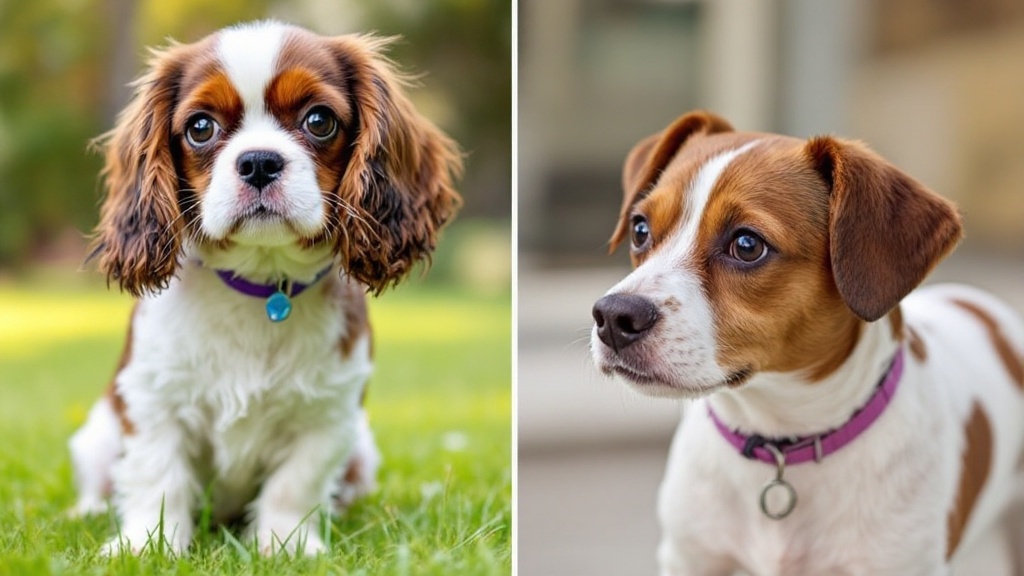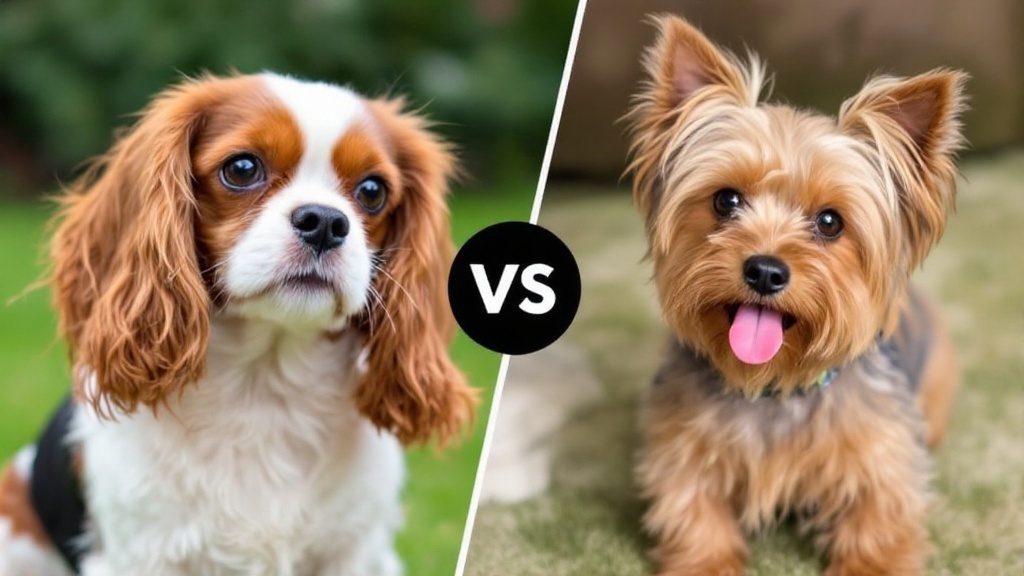Picking between a Cavalier King Charles Spaniel and a Jack Russell Terrier really comes down to your lifestyle and what you want from a dog. Cavaliers are calm, affectionate, and need moderate exercise. Jack Russells are energetic, bold, and need more activity and training.

Each breed has its own look and personality, fitting different types of owners. Understanding their differences in grooming, health, and behavior makes it easier to pick the right dog for your home.
If you’re after a friendly lap dog or a lively, active companion, this comparison should help you figure out which is best for you. Here’s some advice on choosing the right dog.
Key Takeways
- The Cavalier is more relaxed, while the Jack Russell is highly energetic.
- Grooming and care needs differ between these breeds.
- Your daily routine and activity level affect which dog suits you best.
Breed Origin and History
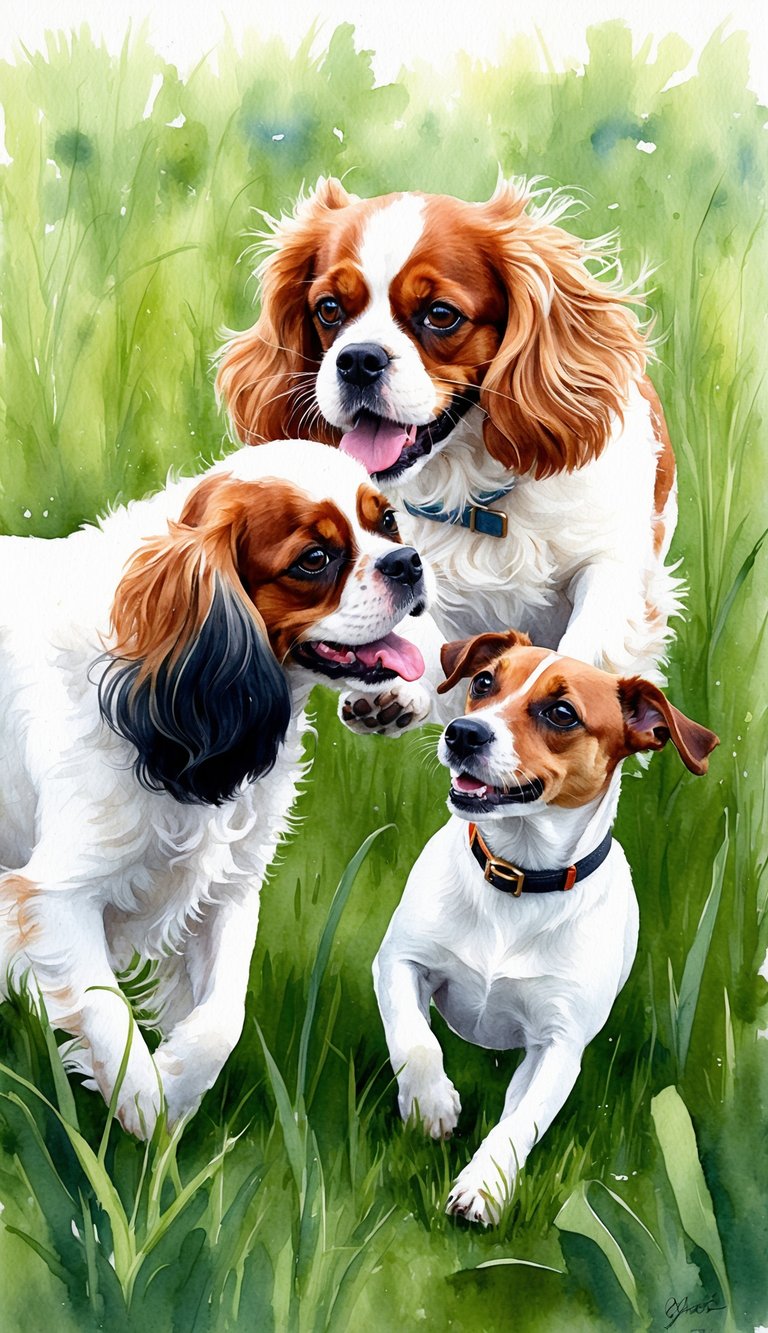
Let’s talk about where these two small breeds come from. Their backgrounds shaped their looks and personalities. They’re also pretty different from other popular small dogs in why they were bred.
Cavalier King Charles Spaniel Background
The Cavalier King Charles Spaniel hails from Britain. It got its name from King Charles II, who adored small spaniels.
These dogs were a hit in royal courts back in the 17th century. If you look at old paintings, you’ll spot toy spaniels that look a lot like today’s Cavalier.
The breed almost vanished in the early 1900s, but careful breeding saved it. Cavaliers have a silky coat and a gentle, loving nature.
They were bred for companionship, not hunting. You might compare them to Shih Tzus or Malteses—other breeds made mostly for being close buddies.
Jack Russell Terrier Development
The Jack Russell Terrier started in England in the early 1800s. Reverend John Russell developed them to hunt foxes.
Jack Russells are famous for their energy and hunting skills. They’re tough, smart, and fast.
Their small size lets them chase animals underground. Unlike Cavaliers, Jack Russells were bred to work—not just to be pets.
They’re similar to the Russell Terrier, but they’re built a bit differently and have their own hunting style. If you compare them to a Boston Terrier or French Bulldog, Jack Russells are way more active and much less likely to just lounge around.
Comparison to Other Small Dog Breeds
Small breeds have all sorts of backgrounds. The Yorkshire Terrier was bred to catch rats, while the Chihuahua goes way back in Mexico as a companion and tiny guard dog.
Pomeranians and Malteses were mostly lapdogs for royalty, a bit like Cavaliers. The Whippet, on the other hand, is bigger and bred for racing—not digging and chasing like the Jack Russell.
These origins really matter if you want to know which dog is right for you. Some are made for cuddling, others for action. History shows you what to expect.
Physical Characteristics
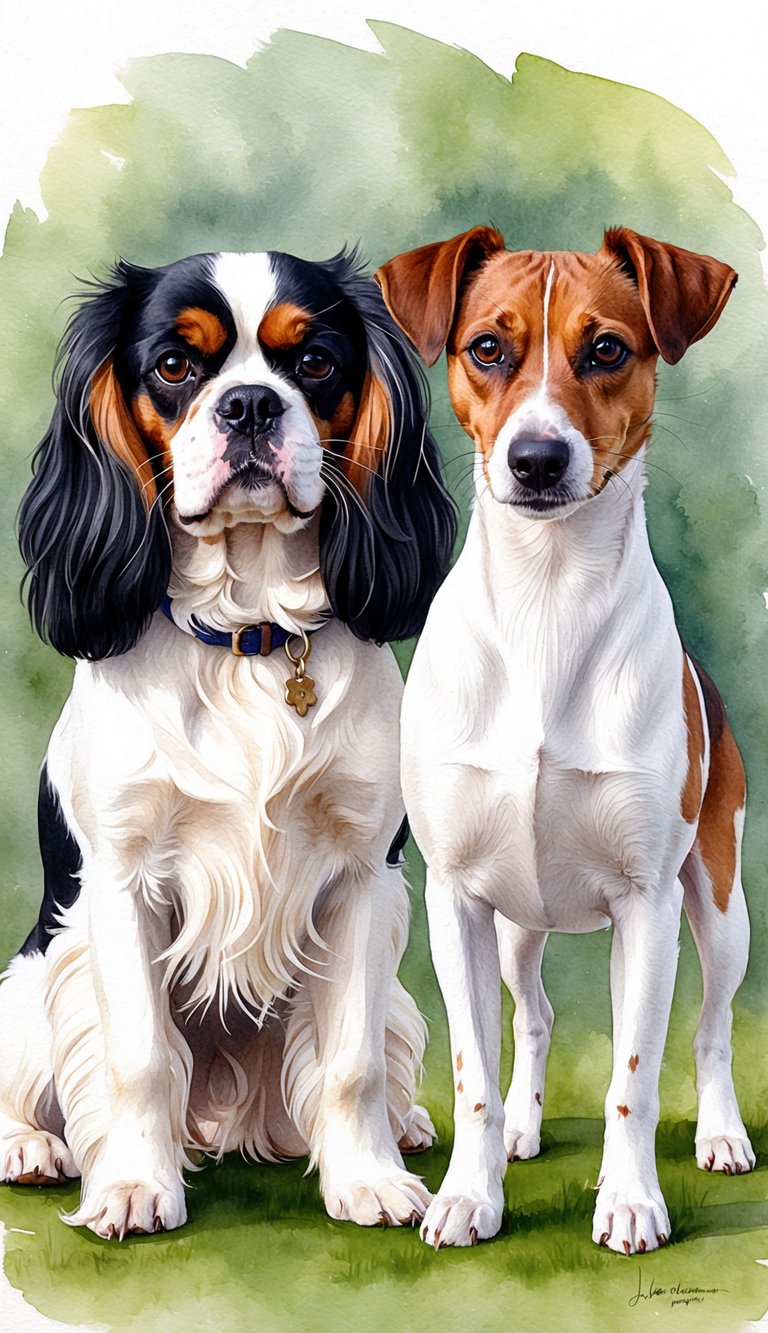
You’ll spot the differences in size, coat, and looks right away with these two breeds. These details can help you decide which fits your vibe.
Size and Weight
Cavalier King Charles Spaniels are small, usually between 13 to 18 pounds. They stand about 12 to 13 inches tall at the shoulder.
They feel sturdy but aren’t heavy. Jack Russell Terriers are a bit smaller and more compact, weighing 13 to 17 pounds and standing around 10 to 15 inches tall.
Jack Russells are muscular and built for agility. Both breeds work well in homes where space is tight, but the Jack Russell’s energy makes it feel even more lively.
Coat Types and Colors
Cavaliers have a silky, medium-length coat that can be wavy or straight. They shed a fair amount, so regular brushing really helps.
You’ll find four main colors: Blenheim (chestnut and white), Tricolor (black, white, and tan), Black & Tan, and Ruby (solid red).
Jack Russells usually have a short, smooth coat, though some have a rough or broken coat that’s a bit more work to keep tidy.
Most Jack Russells are white with black, tan, or brown markings. Their coat is sharp-looking and sheds less than a Cavalier’s.
Distinctive Appearance
Cavaliers stand out with their big, dark, round eyes and soft, gentle faces. Their long, feathered ears and tail give them a classy look.
Jack Russells have an alert, energetic face. Their ears are small and fold forward, and their face is more angular.
Their tail is straight and sticks up, showing off that lively attitude. Cavaliers look soft and classic, while Jack Russells are all about sporty energy.
Temperament and Personality
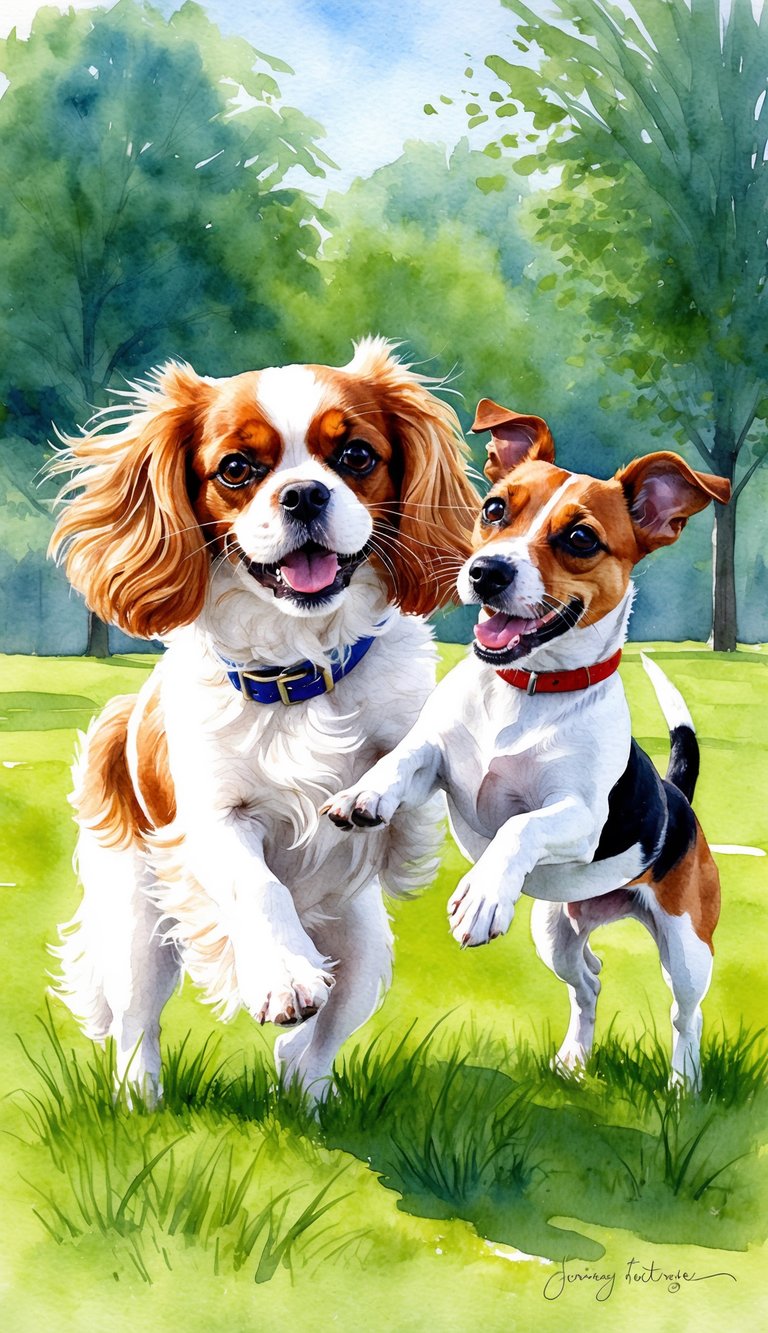
These two breeds feel worlds apart in how they act and fit into your life. Each brings its own flavor to being a companion.
Typical Traits of Cavalier King Charles Spaniel
Cavaliers are gentle and affectionate. They love being close to people and are always up for some attention or a cuddle.
They’re calm and friendly, great with kids and other pets. Most of the time, they’re quiet and patient, making them easy to live with indoors.
They don’t need tons of exercise, but they do enjoy a walk or some playtime. Cavaliers hate being left alone for long stretches.
If you want a dog that bonds closely and slides easily into family life, this breed’s a solid pick.
Typical Traits of Jack Russell Terrier
Jack Russells are lively, energetic, and bold. You’ll notice their curiosity and confidence right away.
They need lots of physical and mental activity. If you slack on exercise, they’ll find trouble—maybe digging or chasing anything that moves.
Jack Russells are playful and smart, but they can be stubborn. They really need consistent training and someone who can keep up with their antics.
If you like a challenge and want a dog that’s fiercely loyal, a Jack Russell might be your match.
Family Pet Suitability
If you’re after a calm, easygoing family dog, the Cavalier King Charles Spaniel is a great fit. Their gentle nature works well in homes with kids and quieter routines.
Jack Russell Terriers are better for active families who can give them plenty of exercise and attention. They need strong leadership and aren’t the best for families with very young kids, just because of their energy and hunting drive.
Both breeds can be good family pets, but matching their temperament to your household is key. Think about your time, space, and energy before picking one.
Exercise and Activity Requirements
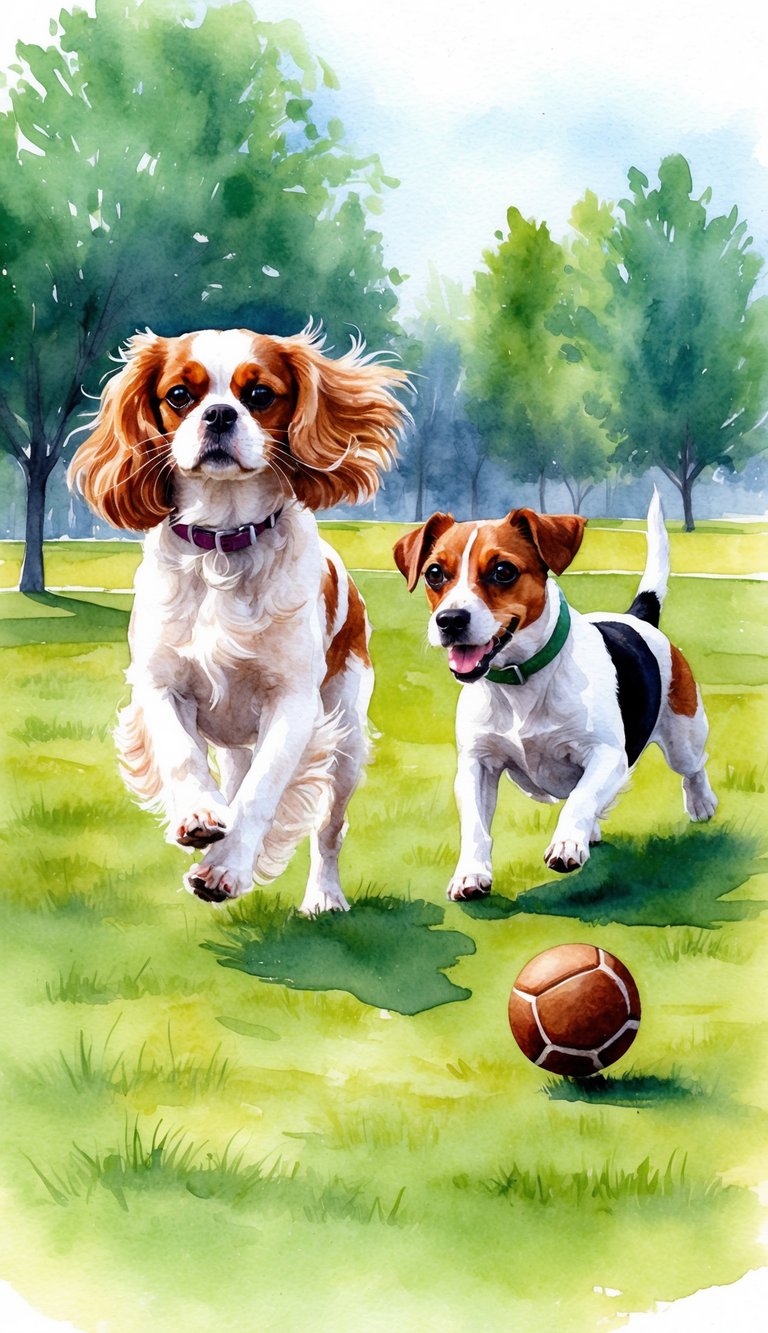
Both breeds need daily exercise, but their energy levels are pretty different. Picking the right activities and toys can make all the difference.
Energy Levels and Activities
Jack Russell Terriers have high energy and need serious exercise—aim for at least 60 minutes of active play or walks every day. They love activities that tap into their hunting instincts.
If they don’t get enough exercise, they’ll get bored and destructive. Cavaliers have moderate energy and do fine with 30 to 45 minutes of exercise daily.
They like gentle walks and some play, but don’t need anything too intense. Mostly, they just want to hang out and stay involved.
Best Dog Sports and Games
Jack Russells thrive with agility training and fetch. Agility courses challenge their speed and brains.
Toys that bounce or squeak keep them interested, and puzzle toys that mimic hunting are a big hit. Cavaliers prefer slower games like light fetch or basic obedience.
Soft balls and tug toys work well for them. Scent games can keep them busy without tiring them out.
Both breeds enjoy toys that get them moving and thinking, but the Jack Russell will need a bit more to really wear them out.
Training and Discipline
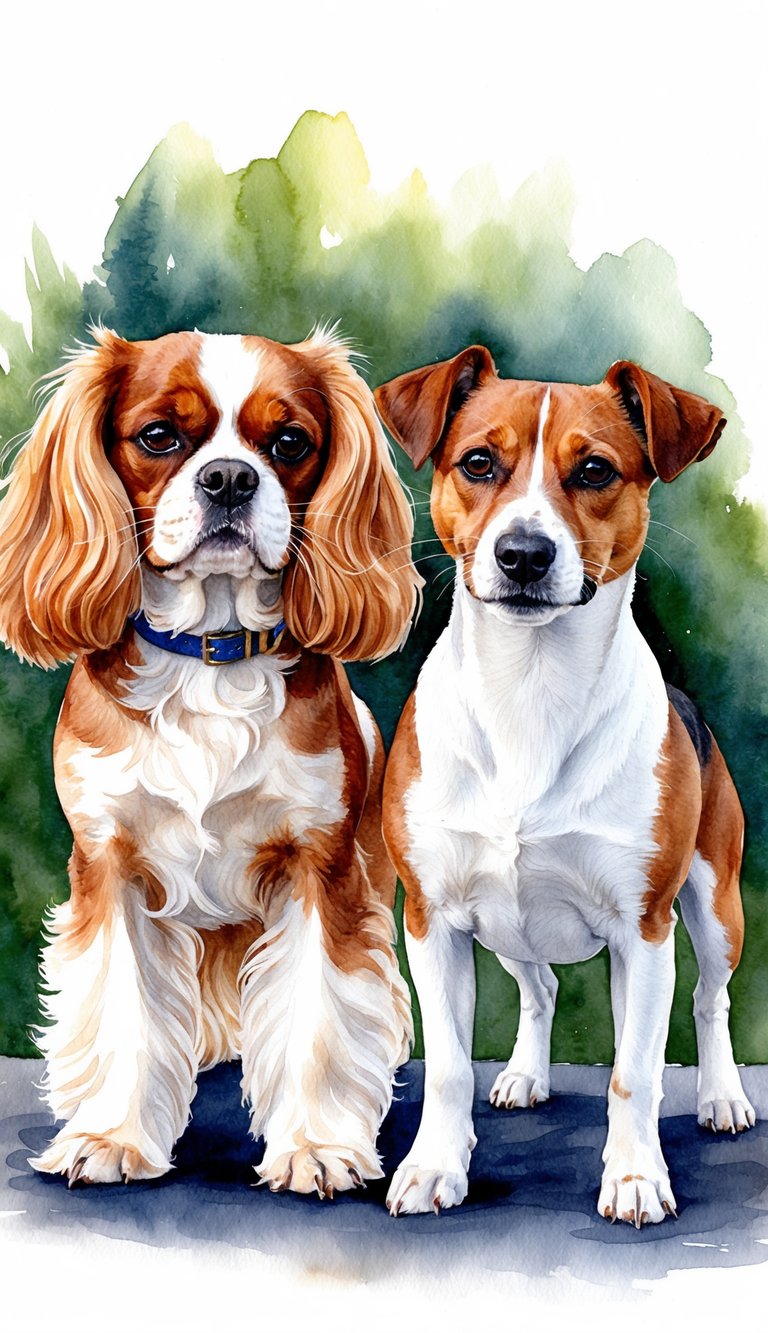
Both breeds do best with consistent training and clear rules. Their personalities affect how they learn and how you’ll need to approach discipline.
Trainability and Intelligence
Cavaliers are eager to please and pick up new commands quickly. Simple cues like sit, stay, and come are usually a breeze.
They do best with gentle, positive reinforcement—treats and praise go a long way. Jack Russells are super smart but can be stubborn.
You need to be firm and consistent. They like mental challenges and learning tricks, but keep sessions short or they’ll get bored.
Early socialization helps both breeds. Practice makes perfect, and it helps avoid bad habits as your pup grows up.
Behavioral Challenges
Cavaliers can get anxious if you’re too harsh. They need patience and calm guidance.
If you’re rough, they might start barking or chewing out of stress. Jack Russells, on the other hand, have strong hunting instincts and tons of energy.
If you don’t set boundaries, they’ll dig, jump, or bark nonstop. They need clear rules and plenty of exercise to keep them out of mischief.
Consistency is everything. You set the tone and shape their behavior.
Grooming and Care
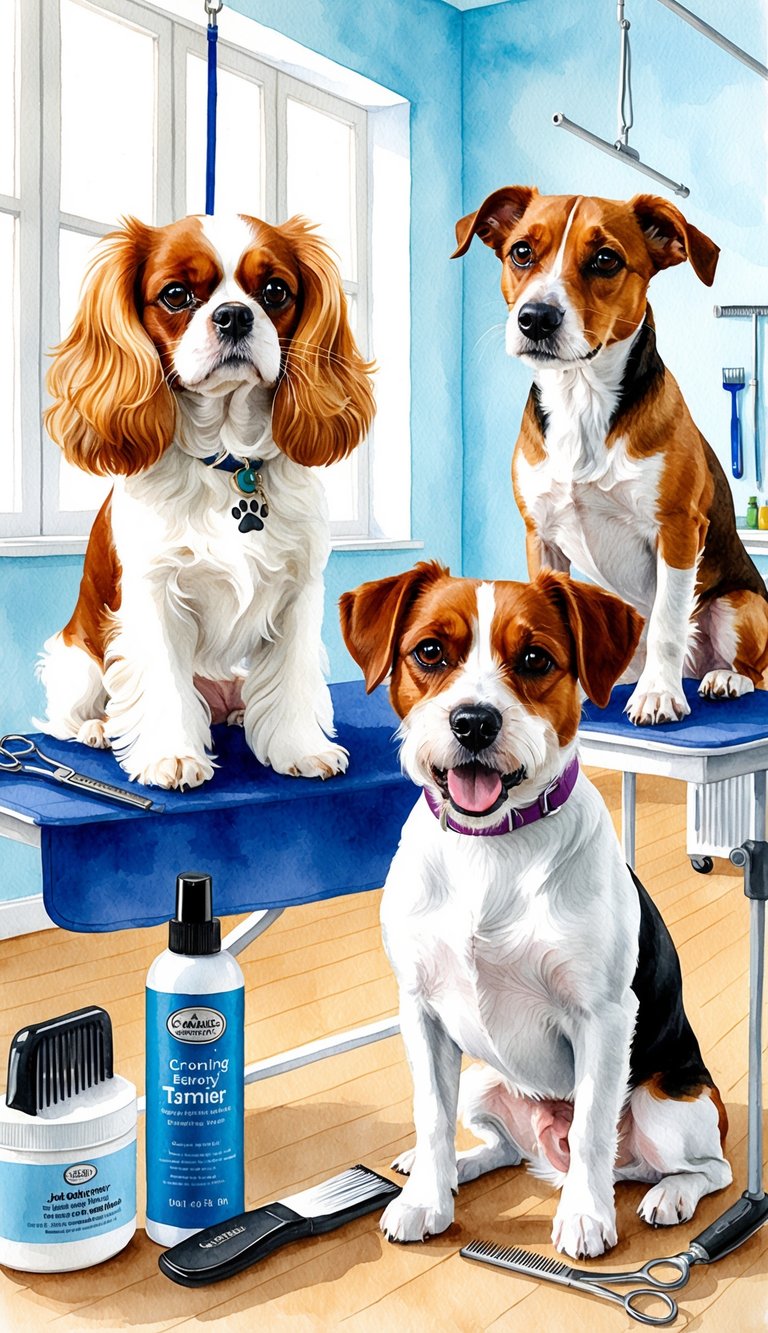
Grooming needs are different for these two breeds, mostly because of their coats and how active they are. Your time commitment will vary.
Shedding and Maintenance
Cavalier King Charles Spaniels have long, silky coats that shed moderately all year. You’ll see more loose hair in spring and fall.
Regular brushing helps keep mats and tangles away. Jack Russell Terriers have shorter coats that shed less.
Their fur is dense and only sheds a little seasonally. You won’t need to brush them as often.
Both breeds need regular checks for ears, nails, and teeth. Cavaliers usually need more skin and hair care, while Jack Russells are just easier to keep clean thanks to their short coat.
Grooming Tools and Routine
You’ll want a slicker brush and a comb for a Cavalier’s coat. Brush your Cavalier at least three times a week to keep tangles from forming.
Trim the fur around their ears and paws now and then. For a Jack Russell, a bristle brush or even a rubber curry brush does the trick for loose hair.
Weekly brushing is usually enough for a Jack Russell. Trim their nails and check their ears every so often so they stay comfortable.
Bath time? Once a month is fine for both breeds. Use a gentle shampoo that won’t irritate their skin.
Dental care matters, too. Brush their teeth regularly to help avoid oral issues.
Health and Lifespan
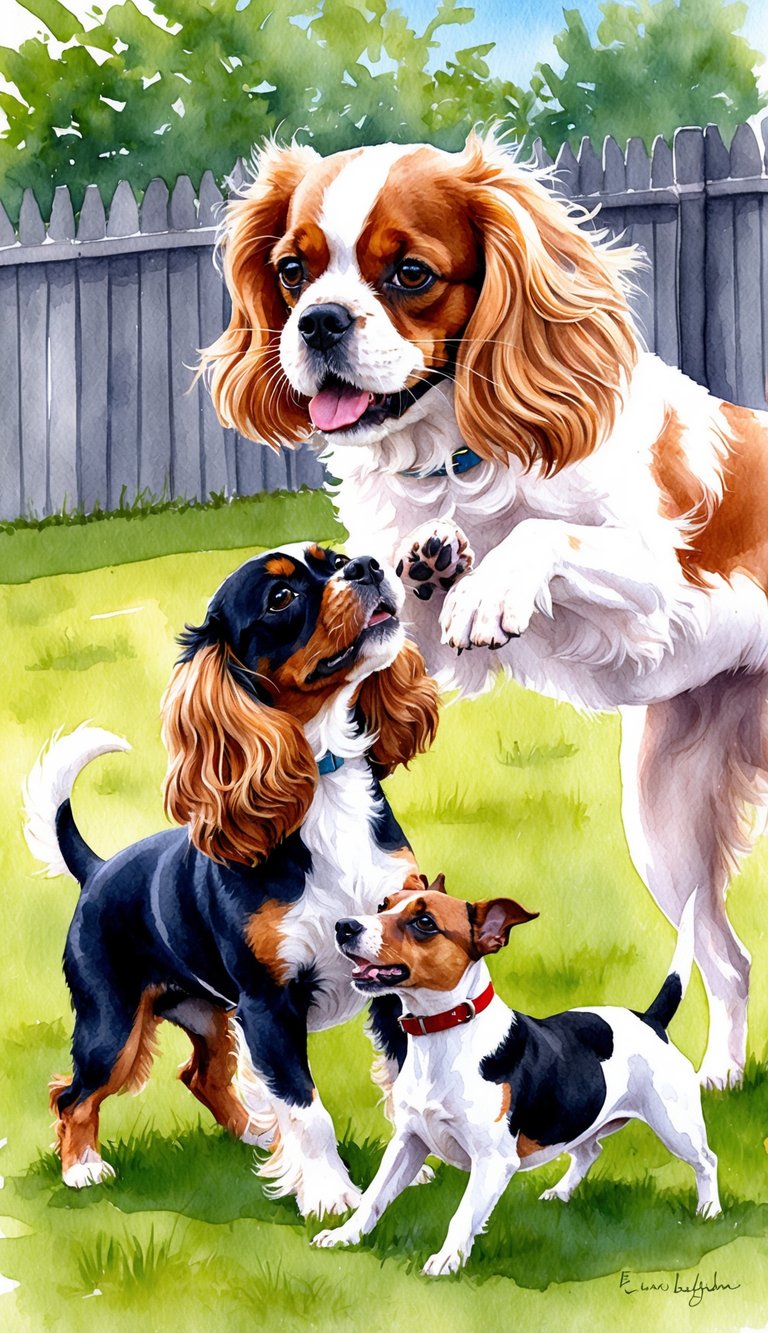
The Cavalier King Charles Spaniel and the Jack Russell Terrier each come with their own health concerns and life expectancies. If you know what to expect, you’ll be better prepared for the years ahead.
Common Health Issues
Cavaliers often struggle with heart problems, especially mitral valve disease. This condition gets worse as they age, so regular vet visits are a must.
You might also hear about syringomyelia, a neurological disorder that causes pain. Jack Russells, on the other hand, don’t have as many breed-specific problems, but they’re prone to patellar luxation (knee issues) and sometimes deafness.
Because Jack Russells are so active, you might see the occasional sprain or strain. Both breeds can catch the usual dog illnesses, so don’t skip those vet checkups.
Expected Lifespan
Cavalier King Charles Spaniels usually live about 10 to 14 years. Heart disease can shorten their lives, especially if it starts early.
Watching their weight and keeping up with vet care can help them stick around longer. Jack Russell Terriers have a longer run—usually 13 to 16 years.
Their small size and tough nature help them stay healthy. With good care, they often stay lively well into their senior years.
Suitability for Different Lifestyles
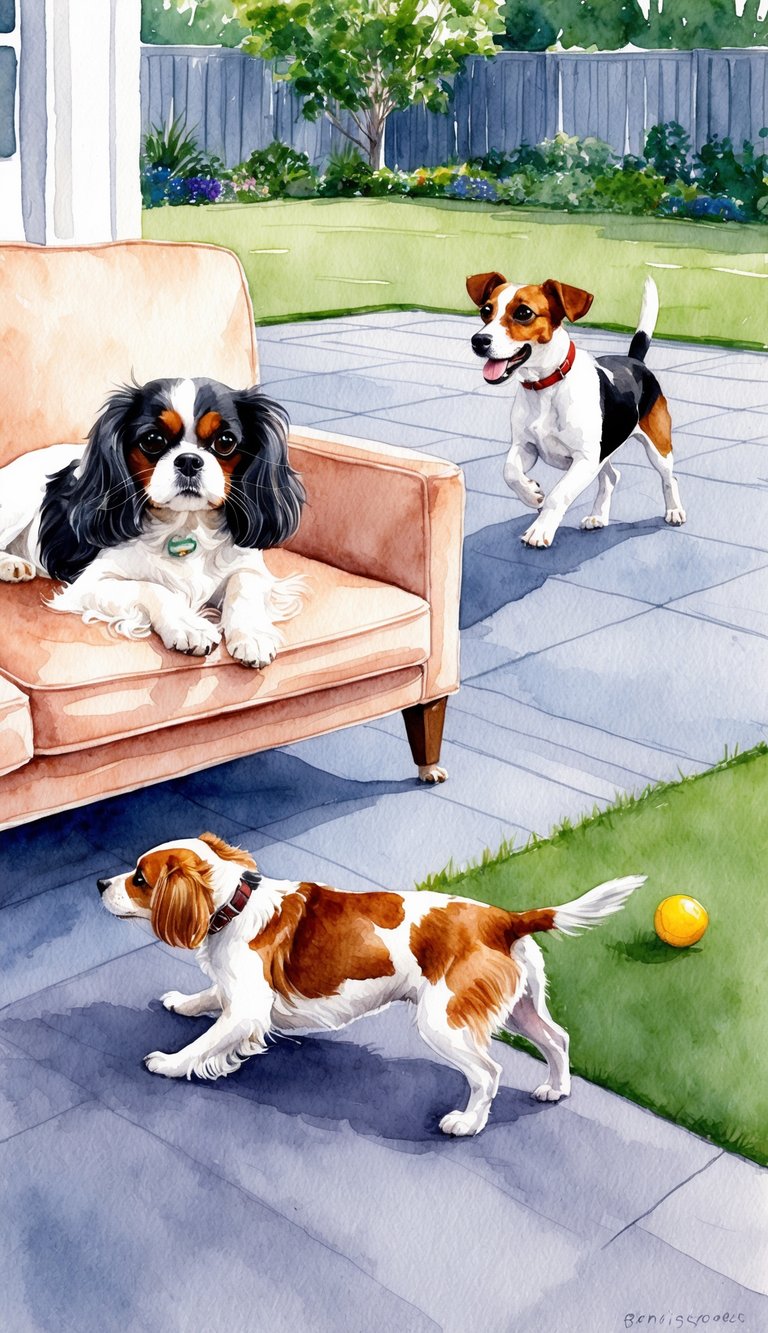
Choosing between these breeds really depends on your home and daily routine. They have pretty different needs when it comes to exercise, social time, and family life.
Best Environment and Living Space
The Cavalier King Charles Spaniel fits right in with apartment dwellers or folks with smaller homes. They’re calm indoors but still need a daily walk.
If you don’t have a big yard, a Cavalier will probably be happy as long as you get out for some fresh air. Jack Russell Terriers need more space and a chance to burn off energy.
They do best with a big yard or frequent trips to the park. Without enough to do, they’ll get bored—and maybe a little destructive.
Apartment life with a Jack Russell? You’ll need to commit to lots of walks and playtime.
| Breed | Best Living Space | Exercise Needs |
|---|---|---|
| Cavalier King Charles Spaniel | Apartment or house | Moderate, daily walks |
| Jack Russell Terrier | House with yard | High, lots of activity |
Compatibility With Children and Other Pets
Cavaliers are usually great with kids and other animals. They’re gentle and love being part of a family.
If you want a laid-back, affectionate dog, they’re a solid choice. Jack Russells are a little more complicated.
They’ve got energy to spare and a strong prey drive, which can make things tricky with smaller pets. Supervise their playtime and keep up with training.
Active families who like a challenge might really enjoy a Jack Russell.
| Breed | Kids Friendly | Other Pets | Notes |
|---|---|---|---|
| Cavalier King Charles Spaniel | Yes | Usually yes | Gentle and social |
| Jack Russell Terrier | Sometimes | Depends | Needs supervision, high prey drive |
Comparison With Similar Breeds
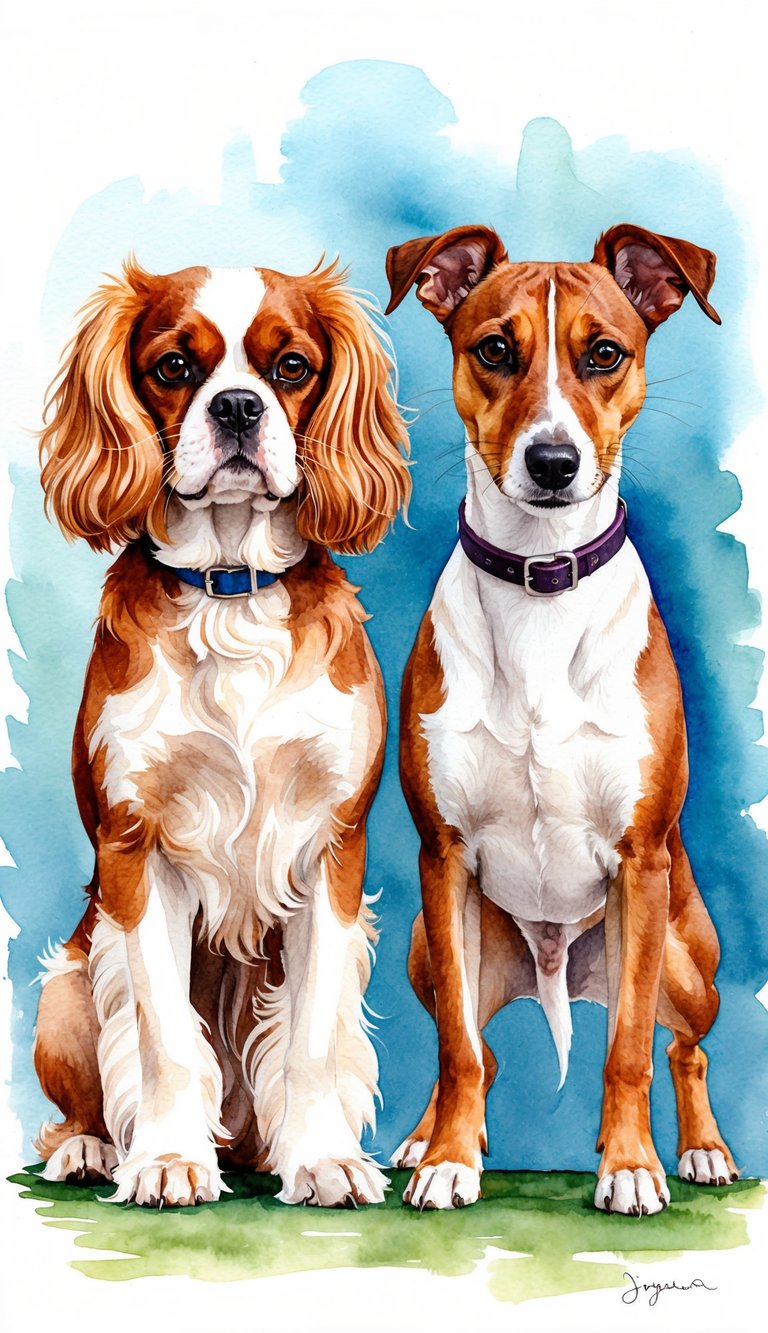
When you’re looking at Cavaliers and Jack Russells, it helps to see how they stack up against other popular small and medium breeds. Their energy, grooming needs, and personalities can be pretty distinct.
Cavalier King Charles Spaniel vs Other Companions
The Cavalier King Charles Spaniel has things in common with the Toy Poodle, Cocker Spaniel, and Papillon. Like Toy Poodles, Cavaliers need regular brushing, but they’re not as hypoallergenic.
Compared to the Cocker Spaniel, Cavaliers are usually a bit calmer and more suited to quiet homes. If you want something even smaller and a little more alert, maybe check out the Papillon.
It’s more energetic, but still affectionate. Breeds like the Bichon Frise and Havanese are also friendly and cuddly, though they’ll need more grooming.
Cavaliers are generally more relaxed than the Miniature Schnauzer or Pembroke Welsh Corgi, both of which have higher energy and need more activity. If you’re drawn to calm, loving dogs, stick with companion breeds known for their easygoing vibe.
Jack Russell Terrier Alternatives
The Jack Russell Terrier often gets compared to other terriers like the Border Terrier, Miniature Pinscher, and Staffordshire Bull Terrier. These breeds are smart and energetic too, but differ in personality and size.
Want a terrier that’s a bit less intense? The Border Terrier is still active but not quite as demanding.
Miniature Pinschers are more independent and alert, while Staffies are strong and loyal but need confident owners. For families who want a lower-energy dog, the Dachshund or Boston Terrier could be a better fit.
Jack Russells excel at agility and have strong hunting instincts. If you want something with similar drive but a little less work, maybe consider a Basenji or West Highland White Terrier.
Here’s a quick comparison table for these alternatives:
| Breed | Energy Level | Size | Grooming Needs | Temperament |
|---|---|---|---|---|
| Jack Russell Terrier | Very High | Small (13-17″) | Low | Intelligent, bold |
| Border Terrier | High | Small (10-11″) | Low | Friendly, alert |
| Miniature Pinscher | High | Very Small | Low | Independent, lively |
| Staffordshire Bull Terrier | Moderate | Medium | Low | Loyal, strong |
| Dachshund | Moderate | Small-Medium | Moderate | Stubborn, playful |
| Boston Terrier | Moderate | Small | Low | Friendly, calm |
| West Highland White Terrier | High | Small | Moderate | Confident, cheerful |
Hopefully this gives you a clearer sense of which breed might fit your life best.
Conclusion
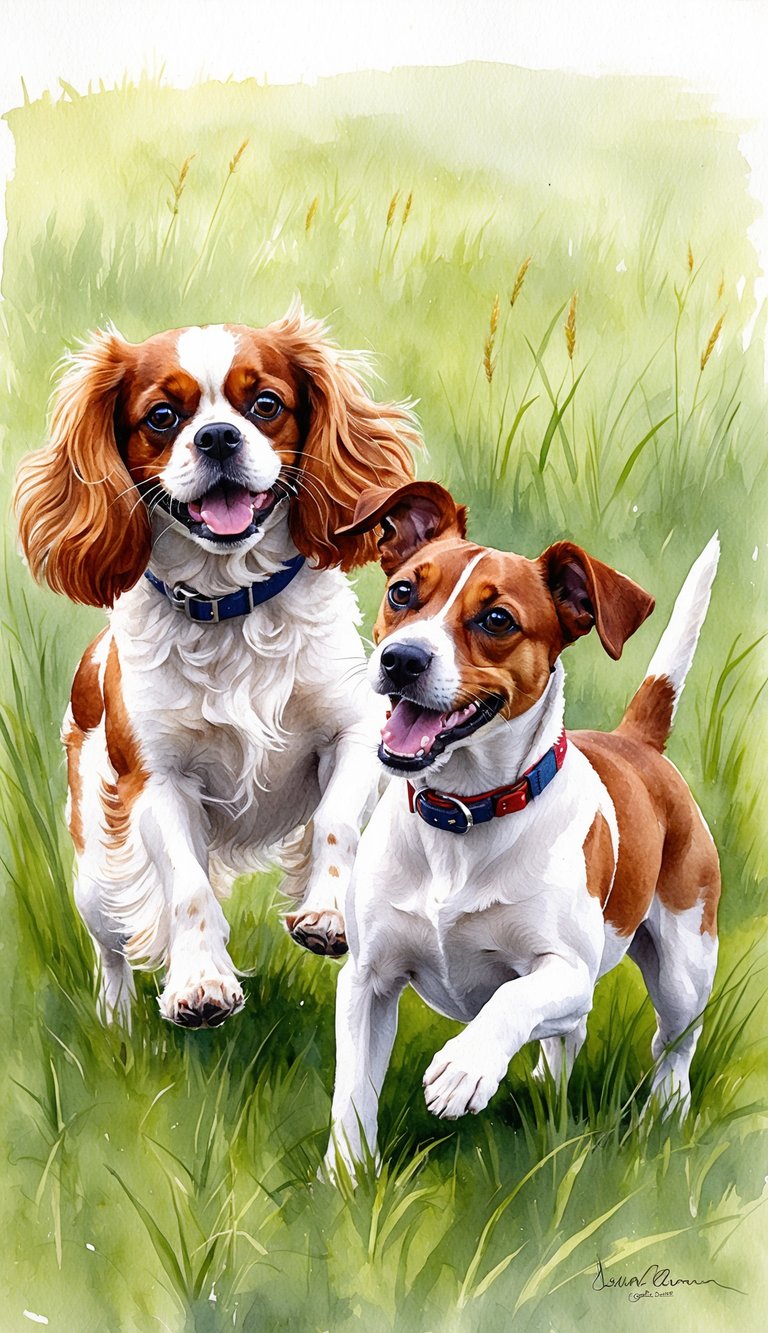
If you’re after a calm, gentle dog who loves to snuggle, the Cavalier King Charles Spaniel might be your match. This breed settles nicely into quiet homes and usually gets along with kids and other pets.
The Jack Russell Terrier brings a whole different vibe. It’s a ball of energy and really needs a lot of exercise.
Pick this breed if you want an energetic dog who’s always up for play and adventure.
Here’s a quick look at key points:
| Trait | Cavalier King Charles Spaniel | Jack Russell Terrier |
|---|---|---|
| Energy Level | Low to moderate | High |
| Exercise Needs | Moderate | High |
| Temperament | Gentle, affectionate | Bold, lively |
| Ideal Home | Calm, family environment | Active, busy household |
Both breeds want attention and affection. The best choice really depends on your daily routine and what kind of dog fits your life.
Think about how active you are, how much space you have, and the time you can give your new companion.

